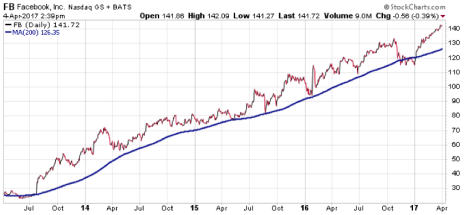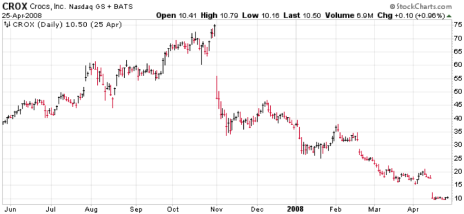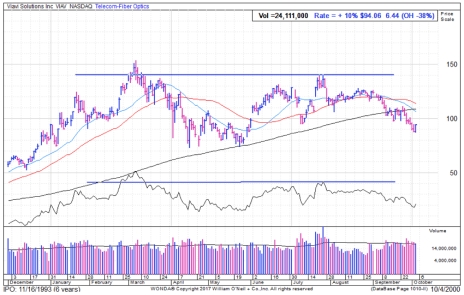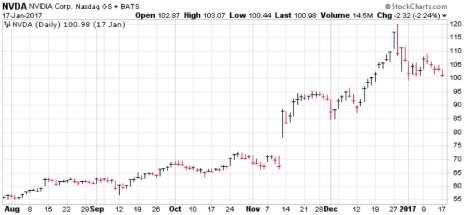These Four Chart Tools Tell When to Sell Your Growth Stocks
“Don’t just tell me what to buy—tell me when to sell!” We’ve heard that from our subscribers in one form or another hundreds of times since we opened our doors many decades ago. Today, the request makes more sense than ever.
After all, an investor can find stock tips just about anywhere if he looks around—there are a few TV shows dedicated to producing stock ideas, and the internet is chock-full of them, with tips on growth, value, income or undervalued stocks. Something for everyone!
Heck, we admit these articles are fun to read. Who doesn’t like the idea of discovering a potentially big winning stock?
But it’s rare indeed to find sound advice on when to sell. In fact, the ability to handle a big winning stock—which usually plays out over many months and includes lots of shakeouts, corrections, bad news, earnings reports and down market periods—seems to be a lost art.
If you hold onto a stock too long or get shaken out too early, much of the benefit from picking a big winner goes out the window.
The good news is that you don’t have to “hold and hope” like so many investors do. With a few simple tools, you can both keep losses to a minimum and hit some homeruns. The key is to follow these guidelines and not go with your gut—if an investor relies on emotion, he’ll never sell at the proper time.
Tight to Loose
Our entire selling philosophy, especially when it comes to growth stocks, revolves around a concept we call “Tight to Loose.” When you first buy a stock, we want a relatively tight loss limit in place—keeping losses small ensures that no one stock makes a big dent to your portfolio, which is important if you run a concentrated portfolio (10% or higher positions in each stock).
Honoring your loss limit is simple and effective. In fact, we’ve found that most of our big winning stocks tend to get off to a good start right away, which is why we keep our loss limits relatively tight (8% to 15%, depending on the volatility of the stock).
Once a stock develops a decent gain for you (say, up 10% to 20%), you can raise and loosen the stop. Say the stock you bought at 60 rallies to 70. You might raise your mental stop, which started at 53 (your initial loss limit), to breakeven at 60. Thus, the stop has been raised, but now the stock has 10 points worth of wiggle room—giving it more of a chance to correct normally before getting going.
And when the stock morphs into a bigger winner (say, 35% to 50% or more), you can continue to gradually loosen your mental stop as shares advance. You can also book partial profits (selling one-third of your shares) and then hold your remaining position for what ideally becomes a long-term advance.
Chart Tools
Mental stops are just one tool we use. We’re also big fans of a few key chart-based sell signals that tell you a stock is coming under distribution by deep-pocketed investors.
A break of key moving averages is one such tool. If you have a small or medium-sized profit, a clear break of the 50-day moving average (which tells you the stock’s average closing price over the past 50 trading days) is usually a sign the intermediate-term uptrend has ended. If you have a big profit, you might use the 200-day moving average, which is longer-term and generally contains a stock’s multi-month (or even multi-year) upmove. Facebook (FB) has been a good example of that (the thick blue line represents the 200-day line).
Major adverse earnings reactions can also tell you that investor perception has suddenly changed. We’re not talking about a 4% or 5% decline—that can happen to any stock on earnings. We’re talking about a decimation of the stock—a 15% or 20% decline after a quarterly report misses expectations. Even though it’s hard to sell after such a downmove, our studies show it’s the right thing to do. Crocs (CROX) was a perfect example back in 2007—we took our big profit in November 2007 after a 30% crash, and we’re glad we did because the stock continued to decline for many months.
Many months of stalling out by both the price and relative performance (RP) line—which measures a stock’s performance relative to the S&P 500—after a huge run is often a sign that demand has dried up. When it’s combined with a break of a key moving average, it’s a very good sign that a top is in. You can see how JDS Uniphase—renamed Viavi Solutions (VIAV) in 2015, one of the internet bubble’s biggest winners, topped in 2000 on the weekly chart below.
A climax run provides an opportunity to sell on the way up. Climax runs occur in stocks that have already trended higher for many months, and then make an explosive move higher on huge volume for another week or two, leaving them massively extended to the upside both shorter- and longer-term. If we see a climax run, we usually sell at least some of our position into the upmove. Nvidia (NVDA) had a climax run at the end of 2016—after a huge run all year, the stock motored from 95 to 120 in just two weeks.
We have other chart tools we use, of course, but these are four big ones. The major point here is that if you follow a tight-to-loose strategy with stops and keep your eyes open for major red flags on the chart, you’ll be able to both ride a big winner and get out soon after the stock tops out.



